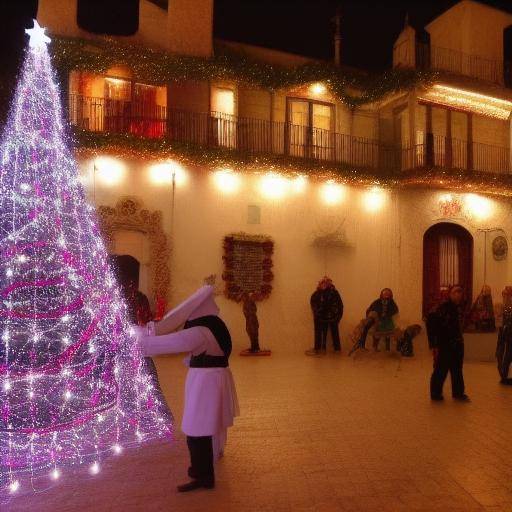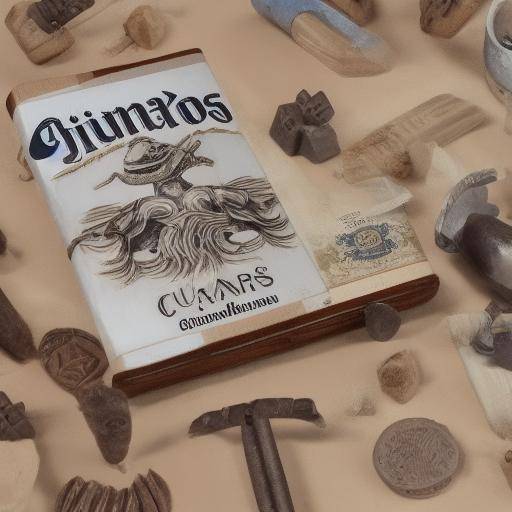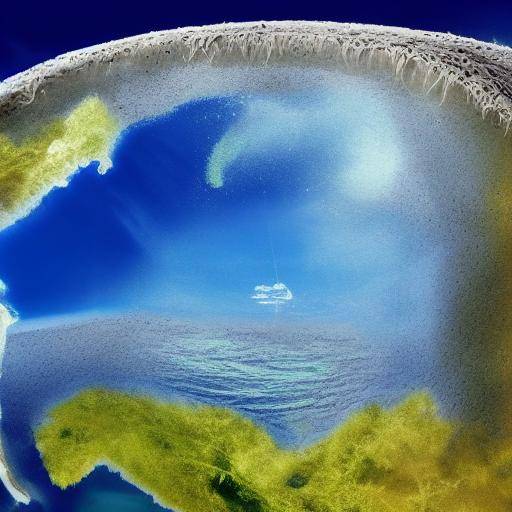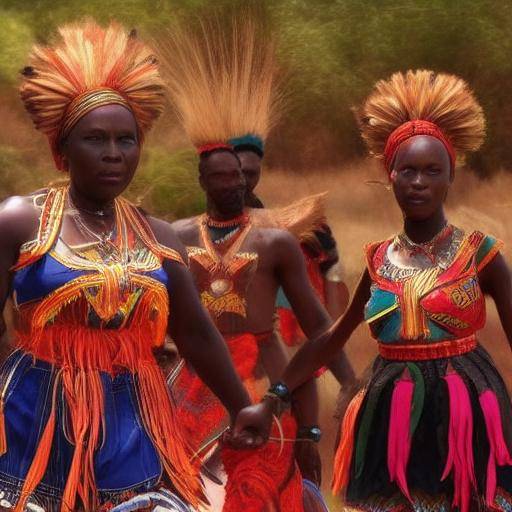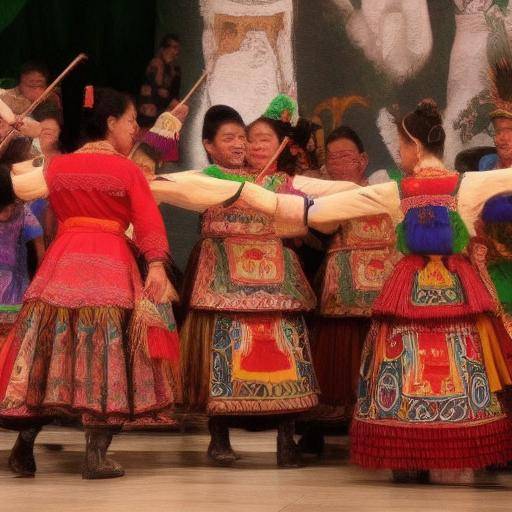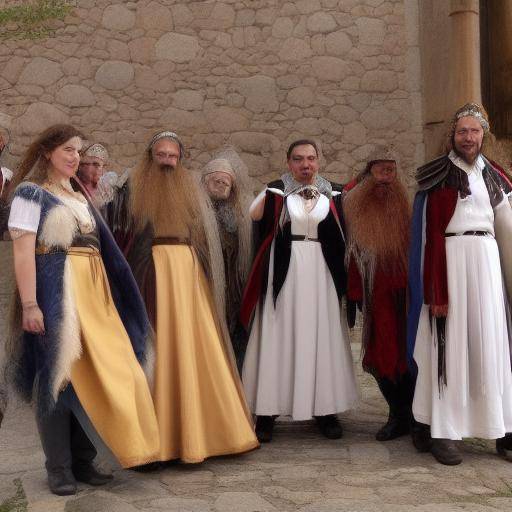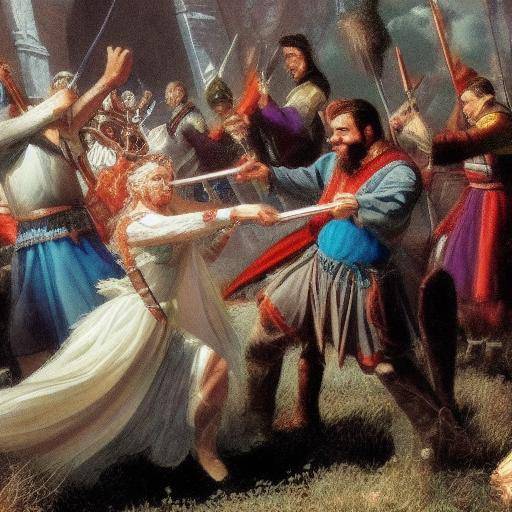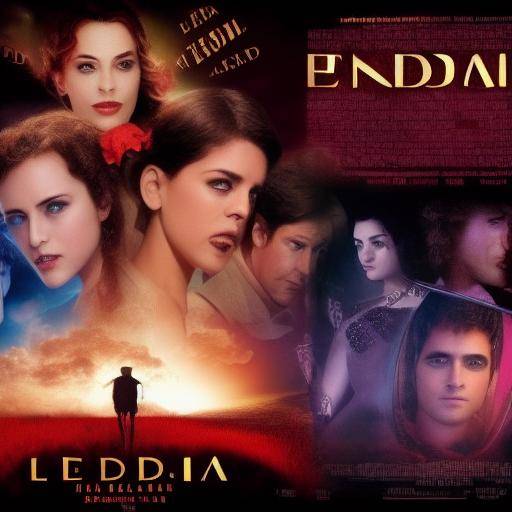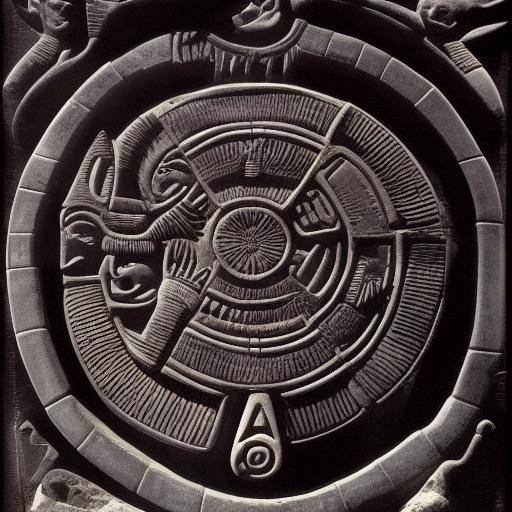
In Aztec mythology, the origin of the sun and the moon is a fascinating account that offers a profound view of the worldview of this ancient civilization. Through legends and myths, a narrative rich in symbolism and meaning is interwoven, revealing how the Aztecs understood the origin of the world and its relationship with the gods. In this article, we will explore the creation of the sun and moon in the Aztec mythology, its cultural and historical relevance, and deepen in the legends that have endured over the centuries.
Introduction
Aztec mythology is one of the richest and most complex cultural manifestations in the ancient world. His mythical accounts, transmitted through generations, offer a window to the thought, spirituality and beliefs of this Mesoamerican civilization. In this context, the creation of the sun and moon occupies a central place in the pantheon of Aztec myths, revealing the way in which the universe and divinity were conceived.
Throughout this article, we will explore in detail the various legends that explain the creation of the sun and moon in the Aztec mythology, as well as its relevance in the understanding of this ancestral culture. In addition, we will examine the historical and cultural importance of these accounts, together with their implications in the daily life of the Aztecs. Through this journey through Aztec mythology, we will unravel the cosmovision of a civilization that has endured through the centuries.
History and Background
Aztec mythology is nourished by a rich religious and cultural tradition that dates back to time immemorial. The roots of these mythical accounts are intertwined with the history and worldview of this Mesoamerican people, offering an integral vision of their understanding of the world and its place within it. Through the exploration of legends related to the creation of the sun and moon, we can enter the minds of the ancient Aztecs and understand their conceptions about the origin and functioning of the universe.
Legends of the Creation of the Sun and Moon
In Aztec mythology, the creation of the sun and the moon is associated with several fundamental myths that illustrate the complex of divine deities, sacrifices and conflicts. One of the most prominent legends is the story of Tonatiuh, the sun god, whose birth is linked to the need of the gods to find a divine being that illuminates the world. Tonatiuh's narrative is closely linked to human sacrifices and the crucial role they played in sustaining the sun.
As for the moon, the figure of Coyolxauhqui, the lunar goddess, occupies a prominent place in Aztec mythology. The legend of his violent death at the hands of his brother Huitzilopochtli and the subsequent ascension of Coyolxauhqui to heaven as the moon offers a unique look at the complex relationship between life, death and divinity in the Aztec cosmovision.
Analysis in Deep
The study of the creation of the sun and moon in Aztec mythology not only allows us to enter into the religious beliefs of this civilization, but also gives us a wider understanding of its worldview and position within a world governed by the interaction of gods, humans and natural forces. From a deeper perspective, it is crucial to analyze the cultural and symbolic impact of these legends on Aztec society.
Cultural and Religious Significance
The creation of the sun and moon in Aztec mythology was not only a story about the origin of the cosmos, but also a central pillar of its religious and cultural system. These myths outlined not only the role of deities in the creation of the world, but also the ritual and ceremonial practices to be carried out to ensure cosmic balance and the continuity of life. The relationship between the sun, the moon and the Aztec divinities was interwoven with everyday activities, agricultural cycles and religious rituals, giving these narratives a profound influence on the daily life of the Aztecs.
Historical and Social Relevance
By exploring the legends of sun and moon creation in Aztec mythology, it is essential to place them within the historical and social context of this civilization. These mythical accounts not only provide a unique vision of the Aztec worldview, but also reveal significant aspects of its history, social organization and relations with other Mesoamerican cultures. The veneration of the sun and moon as divine entities also formed the basis of temporary organization and time measurement, influencing the structure of Aztec society and its understanding of the past, present and future.
Comprehensive review
As we immerse ourselves in Aztec mythology and its explanation of the creation of the sun and moon, we enter a world of symbolic meaning, cultural relevance and historical influence. This examination covers the intersection between ritual, religious, social, economic and political aspects that frame the understanding of the myths related to the sun and moon within the Aztec worldview.
Legacy and Cultural Continuity
The permanence of the legends of the creation of the sun and the moon in contemporary culture demonstrates its lasting influence on the collective imagination. Despite the Spanish conquest and the consequent impact on the Aztec tradition, these myths have persisted through popular tales, modern adaptations and artistic manifestations, highlighting their continued relevance in the cultural legacy of Mexico and beyond.
Contemporary Interpretations
The contemporary interpretations of the legends of the creation of the sun and moon allow a dialogue between Aztec mythology and current perspectives. From academic analysis to artistic expressions and debates on cultural heritage, the relevance of these narratives continues to generate discussions about identity, tradition and the preservation of cultural heritage.
Comparative analysis
By comparing the creation of the sun and the moon in Aztec mythology with other cultural and mythological traditions, we can identify similarities, contrasts and the universality of the fundamental themes that cross different worldviews. This analysis gives us the opportunity to appreciate the diversity of cultural and mythological expressions, as well as the underlying connections that transcend geographical and temporal borders.
Practical Tips and Recommendations
Those interested in exploring Aztec mythology and the creation of the sun and moon can find value in the search for primary sources, academic research, museums and cultural spaces that preserve and present these narratives in an authentic and respectful way. In addition, participation in cultural events, reading of specialized authors and learning the Nahuatl language, the Aztec language, offer a deeper understanding of this rich tradition.
Conclusions
The creation of the sun and moon in Aztec mythology not only represents a set of mythological accounts, but a complex universe of meanings, cultural connections and lasting influences. Through the deep understanding of these legends, we can place ourselves in a space where past and present converge, allowing us to appreciate the richness and depth of Aztec civilization.
The legends of the creation of the sun and moon in Aztec mythology have endured through the centuries, witnessing the evolution and cultural transcendence of a people who have captivated generations. In exploring these accounts, we immerse ourselves in a world of divinity, symbolism and meaning that transcends time and space, giving Aztec mythology a prominent place in the cultural heritage of humanity.
FAQs
1. What is the importance of the sun and moon in Aztec mythology?
The sun and moon occupied a central place in the Aztec cosmovision, symbolizing fundamental divinities and essential elements for cosmic life and balance. Their roles as divine entities, time markers and ritual references made them the pillars of Aztec mythology.
2. How did Aztecs relate to the gods of the sun and moon?
The Aztecs worshiped the sun and moon through specific rituals, ceremonial sacrifices and religious festivities that honored these deities. The relationship with the gods of the sun and the moon permeated all aspects of Aztec life, from agriculture and war to the arts and holiness.
3. What symbolize the sun and moon in Aztec mythology?
The sun represented the vital force, movement and divine power, while the moon symbolized regeneration, fertility and cyclic renewal. Both stars were fundamental to the balance and continuity of life, influencing the rituals, beliefs and daily practices of Aztecs.
4. How did the legends of sun and moon creation influence the Aztec society?
These legends shaped the understanding of the universe, spirituality and Aztec cosmology, influencing social structure, religious practices and art. The narratives of the creation of the sun and the moon were not only mythical accounts, but also generators of meaning and social cohesion in the Aztec society.
5. What is the contemporary legacy of the legends of sun and moon creation in Aztec mythology?
The contemporary legacy of these legends is manifested in the preservation of oral tradition, artistic expressions, academic research and the continuing relevance of these narratives in the cultural identity of Mexico and the understanding of cultural diversity in the world.
6. Where can you find representations of the legends of sun and moon creation today?
The representations of these legends are found in museums, cultural centers, literary works, artistic manifestations and traditional celebrations in Mexico and other places where the Aztec heritage has left its mark. The exploration of these sources offers a vivid and exciting understanding of Aztec mythology.
In short, the creation of the sun and moon in Aztec mythology reveals a unique look to an ancient world permeated with meaning, complexity and resilience. These legends transcend time to lead us to a realm where myth and reality intertwine, enriching our understanding of the cultural wealth of humanity.
Throughout this journey through Aztec mythology, we have unraveled an extraordinary narrative that immerses us in a cosmos of divinities, symbolism and meaning. The legends of the creation of the sun and the moon in Aztec mythology continue to weave a legacy that endures through generations, offering us an eternal vision of a civilization that has captivated the world with its splendor and mystery.


